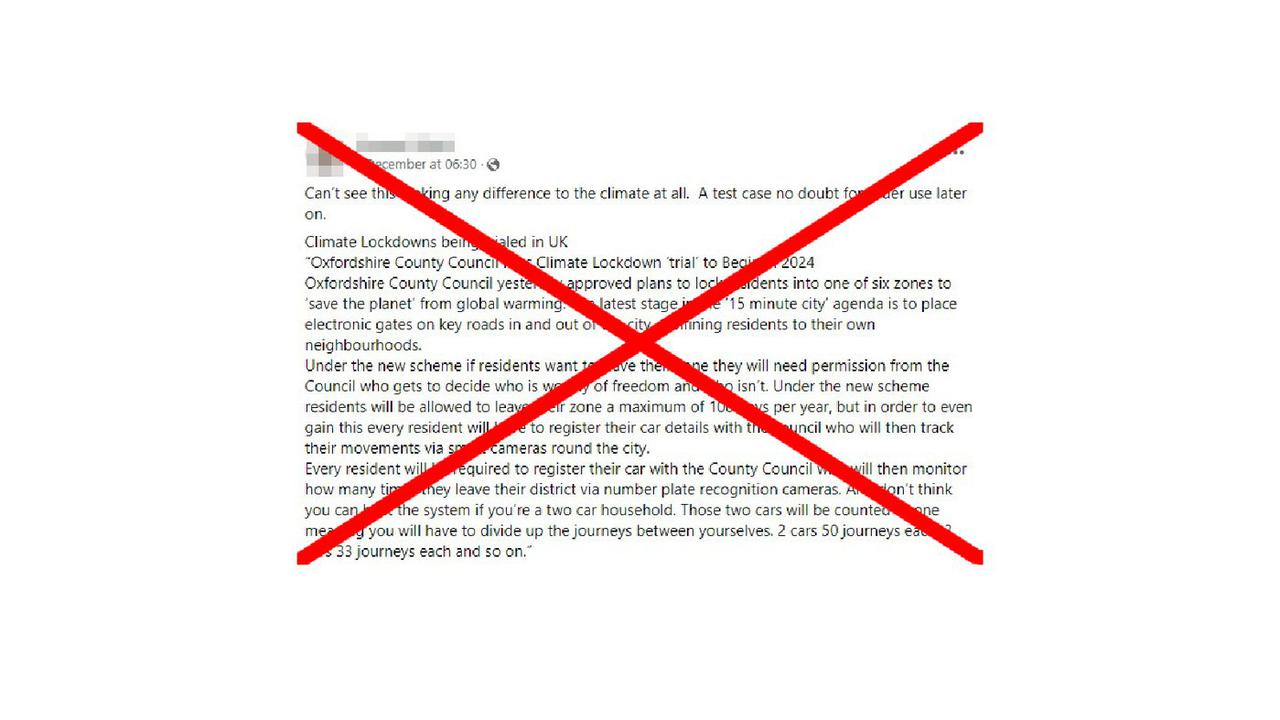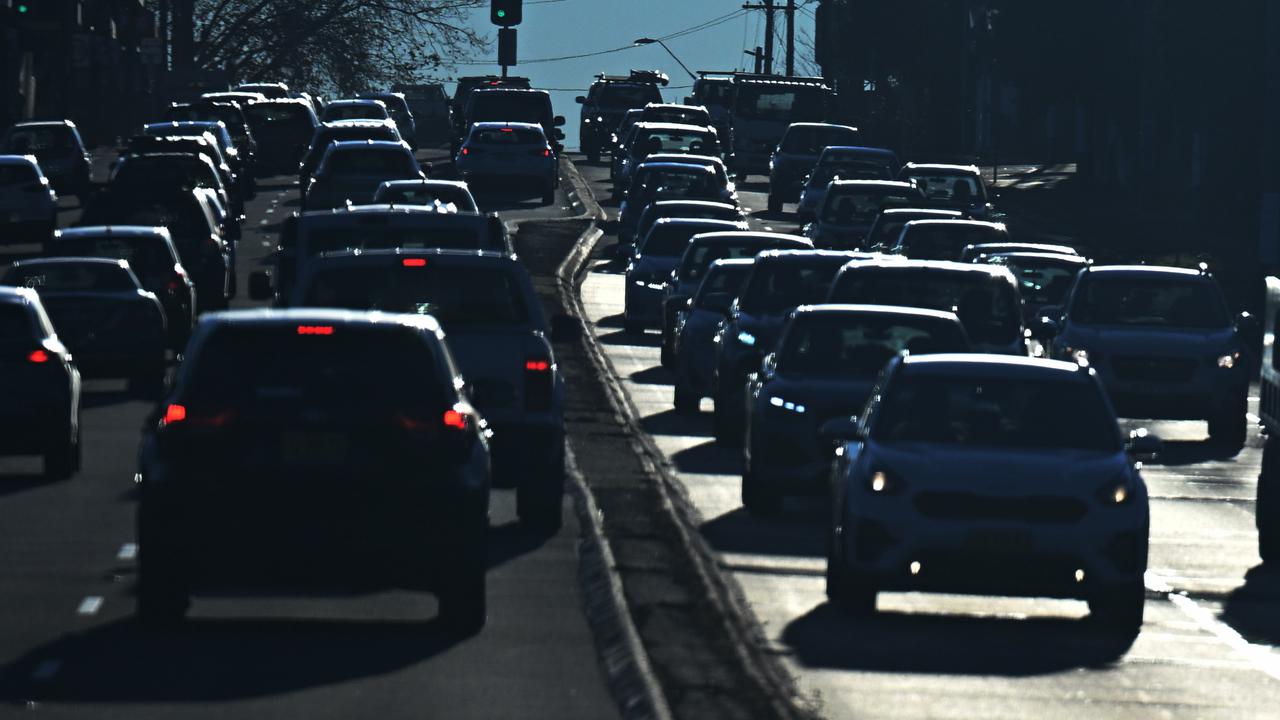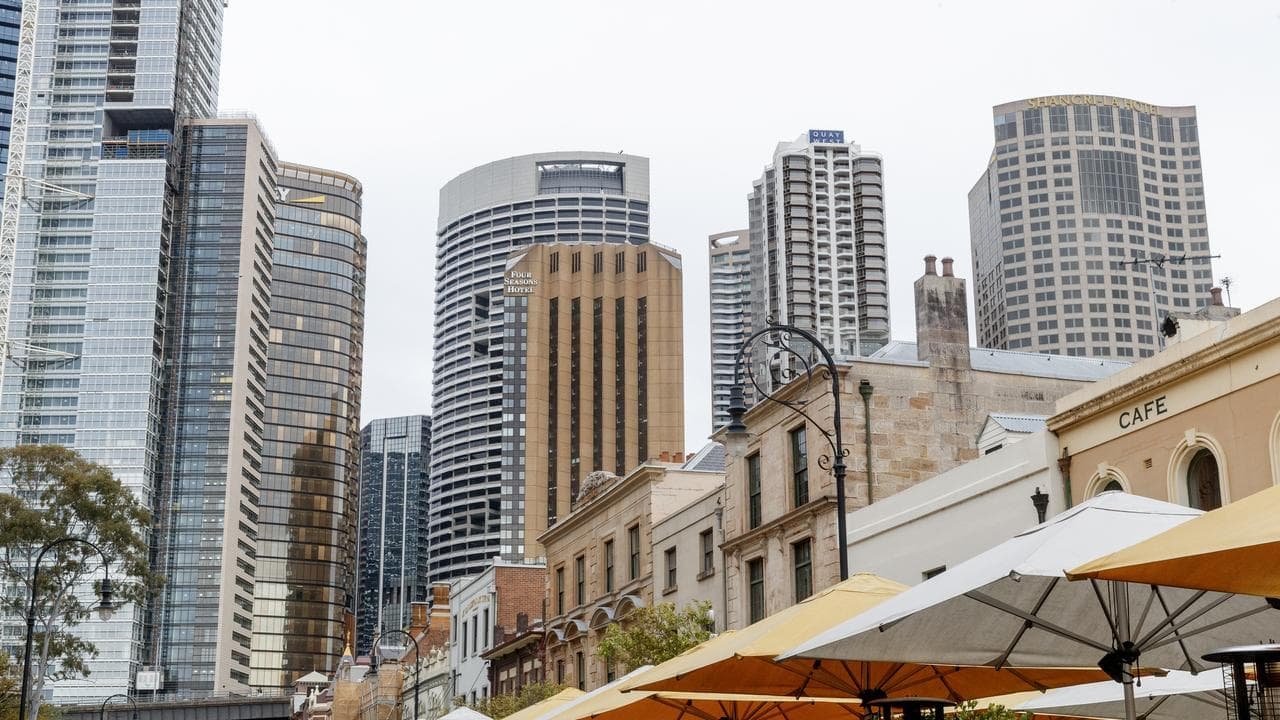WHAT WAS CLAIMED
A UK council will place electronic gates on key roads in a city, confining residents to their neighbourhoods as part of a climate lockdown.
OUR VERDICT
False. The traffic mitigation plan will use number plate recognition cameras on certain congested streets to promote alternative forms of transport. There will be no physical barriers and nobody will be stopped from leaving their neighbourhood.
A viral post about a planned traffic mitigation scheme in Oxford in the United Kingdom claims gates will be placed on key roads to lock residents into zones as part of a climate lockdown.
The Facebook post (archived here) by a New Zealand user claims the scheme's trial will result in residents locked into one of six zones.
"Under the new scheme if residents want to leave their zone they will need permission from the Council who gets to decide who is worthy of freedom and who isn't," the post says.
"...Residents will be allowed to leave their zone a maximum of 100 days per year, but in order to even gain this every resident will have to register their car details with the council who will then track their movements via smart cameras round the city."
The post goes on to claim electronic gates will be built on key roads, "confining residents to their own neighbourhoods".
It adds: "A test case no doubt for wider use later on."

Other examples of the claim are here, here and here.
However, Oxfordshire County Council officials told AAP FactCheck the claim distorts its traffic management trial, and nobody will be confined to their neighbourhood or not allowed to drive. The council also confirmed there will be no electronic gates or any physical barriers.
Six traffic filters were approved on November 29 for a trial in Oxford. Beginning in 2024, they will run from 7am to 7pm and number plate recognition cameras will be in place requiring drivers to have a permit if they pass through certain areas or face a fine. The filters are only on certain roads, not in 'zones,' as this map shows.
Residents can drive through the filters free up to 100 days a year with the permits while buses, taxis, emergency workers and other professionals can get exemptions or special permits.
Oxford has a two-tier system of government, with the County Council responsible for transport and the City Council covering other local services such as planning. Both councils put out a joint statement on December 7 addressing the incorrect claims circulating online about the traffic filters, stating that "the reason we have proposed these changes is because - as everyone who lives and visits Oxford knows - the city has had awful congestion for decades. This is damaging both our economy and our environment, and is making the bus network unviable".
In the statement, the councils said: "The misinformation has … resulted in both councils receiving numerous calls and social media messages from worried residents".
Police were also reportedly called after local officials were abused and threatened.
Avni Gupta, a senior communications officer at Oxfordshire County Council, told AAP FactCheck the filters are not designed to stop people from driving private vehicles, but to improve alternate modes of travel such as public transport, walking and cycling.
Ms Gupta confirmed the filters will not be physical barriers or electronic gates but take the form of automatic number plate recognition or ANPR cameras for monitoring.
"Residents will not need permission to leave their home or drive," she said in an email.

Tom Jennings, communication manager at Oxford City Council told AAP FactCheck: "Everyone can go through all the filters at any time by bus, bike, taxi, scooter or walking."
He added: "Residents will still be able to drive to every part of the city at any time - but in the future, during certain times of the day, you may need to take a different route (e.g. using the ring road) if you want to travel by car."
The Facebook post also claims the plan is part of the "15 minute city agenda," but that is actually a completely different proposal by Oxford City Council, part of a global initiative to promote better access to essential services within a 15-minute walk or bike ride from residents' homes.
"The 15 minute city is a Oxford City Council plan, and is not related to the traffic filters," Ms Gupta confirmed.
Mr Jennings added that the post was "conflating two proposals".
Similar misleading claims about a "climate lockdown" in Oxford have been debunked by other fact checkers here, here and here.
The Verdict
The claim that a UK council will place electronic gates on key roads in a city, confining residents to their neighbourhoods as part of a climate lockdown is false.
Oxford's traffic mitigation plan will use number plate recognition cameras on certain congested streets in an attempt to promote alternative routes and transport. There will be no physical barriers and nobody will be confined to any particular area.
Council officials say the plan is an attempt to ease the city's crippling congestion issues.
False - The content has no basis in fact.
AAP FactCheck is an accredited member of the International Fact-Checking Network. To keep up with our latest fact checks, follow us on Facebook, Twitter and Instagram.












